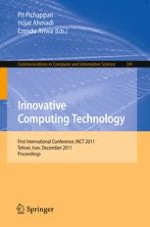2011 | Book
Innovative Computing Technology
First International Conference, INCT 2011, Tehran, Iran, December 13-15, 2011. Proceedings
Editors: Pit Pichappan, Hojat Ahmadi, Ezendu Ariwa
Publisher: Springer Berlin Heidelberg
Book Series : Communications in Computer and Information Science
